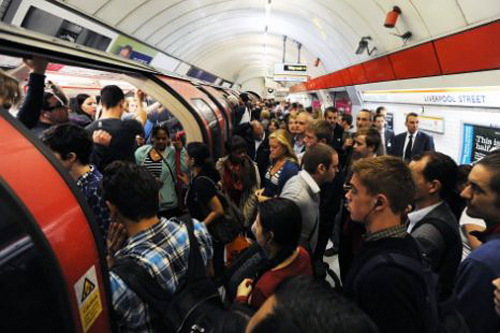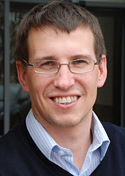Measuring crime risk on the London Underground
 The London Underground with passengers
The London Underground with passengers
Thu, 03 Apr 2014 14:36:00 BST
Researcher works with Transport for London developing an algorithm to calculate the probability of where theft is most likely
A UNIVERSITY of Huddersfield criminologist who has been working closely with authorities in London to cut crime on one of the world’s busiest transport systems will appear before a House of Commons select committee to describe his findings. Dr Andrew Newton is also forming links with overseas experts so that their research can make public transport systems around the world safer places to travel.
By analysing crime patterns on the London Underground, which carries more than one billion passengers a year, Dr Newton is able to draw conclusions about the environment of stations and how they can help or hinder crime, such as pickpocketing. There are also important lessons to be learned about the policing of the Tube system and the areas that surround stations.
 Dr Newton is one of five experts invited to give evidence to the House of Commons Transport Committee during a special session on Monday 7 April. A panel of 11 cross-party MPs – including the Colne Valley’s Jason McCartney – will gather information on wide-ranging aspects of security on the railways.
Dr Newton is one of five experts invited to give evidence to the House of Commons Transport Committee during a special session on Monday 7 April. A panel of 11 cross-party MPs – including the Colne Valley’s Jason McCartney – will gather information on wide-ranging aspects of security on the railways.
Just published is Dr Newton’s co-authored article Above and below: measuring crime risk in and round underground mass transit systems, in the journal Crime Science. It reports on unique research into theft below ground, during Tube journeys. Key findings include the fact that below ground offences are concentrated at particular stations, with the risk being highest during morning and late afternoon peak travel periods, when there is also a greater risk of theft above ground in the nearby environs of the stations.
“The findings suggest that offenders who operate below ground may also operate above ground on major transit systems,” writes Dr Newton. “This has clear policy implications for policing these settings and highlights the importance of joint operations and information-sharing between transit agencies and local police forces.”
Algorithm to calculate the probability of where theft is most likely
Dr Newton, who is a member of the University of Huddersfield’s Applied Criminology Centre, has been researching transit crime since 1999. Two years ago, he was approached by the British Transport Police (BTP) and Transport for London (TfL) – which runs the London Underground – to collaborate on a new crime reduction project. Although crime on the network is incredibly low, with less than 10 crimes per million passenger journeys, TfL and BTP were keen to find new ways to tackle pickpocketing, which accounts for about half of all recorded crime on the London Underground.
“By its nature you don’t know when and where you are pickpocketed,” said Dr Newton. “You get on at the start of the journey and you might change to a different line. It might not be until the end of the journey that you realise you have been a victim.”
This factor creates difficulties for research into the hot spots for theft below ground on the Tube system. Therefore, Dr Newton worked with Transport for London in developing and adapting research methodologies that have helped to identify the locations on the network where there is the greatest likelihood of crime. The research develops upon and uses data from an analytical tool built by the BTP in collaboration with TfL. The tool uses an algorithm to calculate the probability of where theft is most likely to be occurring and help the BTP to target resources more effectively.
Andy Gill, Performance Manager for TfL Enforcement and On Street Operations said: “At TfL, we always want to be at the forefront of ways to tackle crime, especially developing the evidence base for effective solutions for crime reduction, and for that reason we were delighted to be involved in this research. We enabled access to the necessary crime information from the BTP, the Metropolitan Police and the City of London Police Forces, plus passenger journey information to test the model and develop greater understanding of crime interactions between Tube stations and the surrounding environs. Our partnership has shown how research can be practically applied to operational policing, and we are confident this model will help our BTP colleagues maintain low crime upon the London Underground.”
Streets, Transport and Crime
Dr Newton will continue his research and to disseminate his findings. He has just spoken at a major seminar organised by University College London in collaboration with TfL, entitled Streets, Transport and Crime. Towards the end of 2013, he delivered an address at a conference in Stockholm on the subject of public transport safety and he discussed his London Underground research at the American Society of Criminology in Atlanta and at an international seminar at California State University San Bernardino, where he is now collaborating with its Center for Criminal Justice, aiming to contribute to a project on safety on the California transit line.
“I would like to develop an international network and I am talking to colleagues in Sweden, North America, and Australia looking at best practice and deciding if the tool we have developed with Transport for London can be rolled out to other areas,” said Dr Newton.
He is currently working on a co-authored edited book dealing with crime and mass transit, due to be published in 2015, and has contributed an entry on crime and public transport to the new Encyclopaedia of Criminology and Criminal Justice (Springer).







